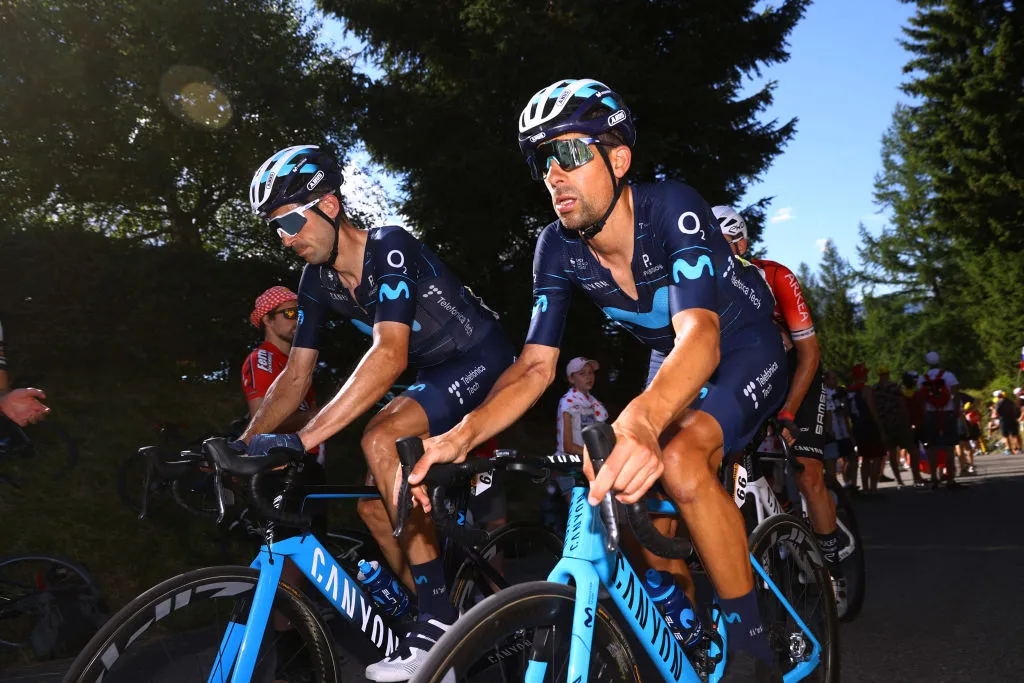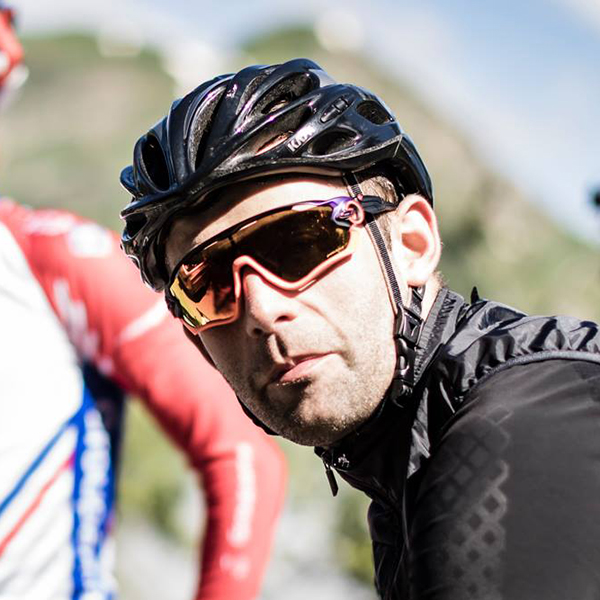The Canyon Ultimate has been a mainstay bike of the pro peloton for over a decade now, since the German brand sponsored the Omega Pharma-Lotto team in 2011.
It’s since been seen under riders from the various iterations of teams Katusha, Movistar, Alpecin-Deceuninck, Arkea-Samsic and its partly eponymous Canyon/SRAM outfit – covering four distinct evolutions… with more interim updates besides.
However, the lineage of the Ultimate can be traced as far back as 2004, before Canyon moved into top-tier team sponsorship.
So when a new Ultimate appeared on the UCI's list of approved frames and forks in June, and subsequently broke cover at the Criterium du Dauphiné, we expected to see a little more of it at the Giro d’Italia Donne and Tour de France. We’ve not been disappointed.
We’ve got our magnifying glasses out and have been poring over the images to have emerged of the bike in action… and this is what we know so far.
Updated fork

One of the biggest updates on the new Ultimate would appear to be the reprofiled fork, which now features a wider-set crown with legs that extend downwards with almost no flare.
The obvious reason for this would be to achieve greater tyre clearance – the Ultimate is recognised as a strong all-rounder, capable of seeing everyday riders through their long club rides and sportives, as well as racers through Grand Tour mountain stages.
Running wider tyres remains one of the best ways to achieve greater comfort on the road for most riders, and we’d bet that Canyon is designing the new Ultimate to run 28mm or even wider tyres natively.
Could this be the first lightweight race-oriented bike to be designed around 30mm tyres?
The fork profile also nods to the latest thinking around optimised aero performance. There’s a significant gap left between the fork legs and the wheel, while also leaving clear space under a raised fork crown and beneath the down tube.
Plus, the carbon wheels that we’d expect to be fitted on most models of the Ultimate all feature ever wider external rim widths, so Canyon has likely taken note and optimised the design for those wheels.
Aeroad-inspired Aerocockpit bar-stem

One thing to have already broken cover is the new aero bar-stem setup, as originally reported by Cyclingnews at the Dauphiné, which looks very close to the CP0018 Aerocockpit used on the Aeroad.
This uses a proprietary quill stem style, which – as Simon pointed out in his review of the Aeroad – theoretically locks riders into using only the Aerocockpit bars.
We’d expect Canyon to have done its research here, possibly using the Aeroad as a data source, to ensure the bar adds sufficient performance to the overall bike, without compromising rider customisation.
The Aerocockpit features three-width adjustability. The Aeroad offered 40mm of total adjustment, with achievable widths depending on the size of frame you buy.
We’d expect at least the same here, but we’d like to see more than the 15mm of height adjustability offered so that non-pros can more easily achieve a perfect fit.
Plus, as with the Aeroad’s P0018 Aerocockpit (and practically all fully integrated handlebars), the stem length is likely to be fixed. This means you’ll probably need to swap the whole thing out if you prefer a non-stock stem length, unless Canyon intends to offer customisation at point of purchase.
D-shaped seatpost

For the past few generations of the Ultimate, Canyon has used its VCLS seatpost to provide a level of comfort through the saddle.
That features a rounded tube with a flared upper section that does a mild job of imitating a D-shape tube’s more compliant properties. Now though, Canyon has gone all-in on the D-shape with a new carbon post.
Naturally, this fits into a D-profiled seat tube, which we reckon is a decision taken to do the usual trick of increasing lateral rigidity, improving vertical flexion and reducing turbulent airflow in front of the rear wheel.
Plus, a new seatpost clamp has been spotted in the underside of the seat tube / top tube junction.
On the current Ultimate, the seatpost clamp is located in the seatstay bridge. Shifting it to the underside of the seat tube / top tube junction would bring improvements to accessibility, plus move it out of the firing line for road spray.
Tweaked aero

We’ve mentioned aerodynamics three times already now, but it’s worth looking at the new Ultimate as a whole to see further modifications.
On top of the rounded fork profile, Aerocockpit and reprofiled seatpost and seat tube, the frame’s tubes look to have seen some more gentle modifications, which are likely aimed at improving wind-cheating performance.
That said, Canyon hasn’t gone for obviously filling those new(ish) UCI-approved compensation zones, and has chosen not to opt for dropped seatstays, as seen on many lightweight all-rounders such as Cannondale’s SuperSix EVO.
Naturally, Canyon will be wary of the new Ultimate encroaching on the Aeroad’s territory, but what look like slightly deeper side profiles to the down tube, head tube and top tube / seatstay junction all nod to controlling airflow.
In this instance, we think Canyon has gone after more real-world performance, prioritising stability at wider yaw angles than the Aeroad, while looking to take the wins when it can in more benign conditions.
If that’s true, we’d suggest it’s a wise call from the German brand.
Frame materials and disc brakes

A quick check of Canyon’s website reveals three carbon layups for the existing Ultimate: the CF SL, CF SLX and CFR. Of those, all bar two of the builds offered are disc brake.
The new Ultimate could offer an opportunity for Canyon to rationalise its range a little more, potentially dropping the now-aged SL layup entirely from the new design.
In a world of rising costs, it might be a prudent move to keep the current Ultimate design for its entry-level CF SL carbon, while offering the new design in the CF SLX and CFR layups.
That would also enable the brand to easily retain a rim brake offering at the lowest price point for those that want it – with a carbon layup that remains very competent, in our opinion.
There’s no doubt that the tide is drawing in on the rim brake sand castle, but perhaps Canyon has an opportunity to dig a moat around it for a little while longer.
Under the skin, the new Ultimate might introduce some kind of revised frame technology or a more optimised carbon layup, to improve compliance or stiffness, but that’s pure speculation at this point.
When will it be launched?

Canyon has remained tight-lipped on the new Ultimate’s launch date, but it’s been in the wild in plain sight for a while now, so we’d expect to see it sooner than later.
With the last Ultimate launch – the CFR – Canyon waited until late summer before officially breaking cover, while the current industry struggles with component availability might mean it has chosen to hang on until it has a decent stock of the new Ultimate ready to go.
We’ll be sure to bring you the very latest news and insight when it becomes available.
